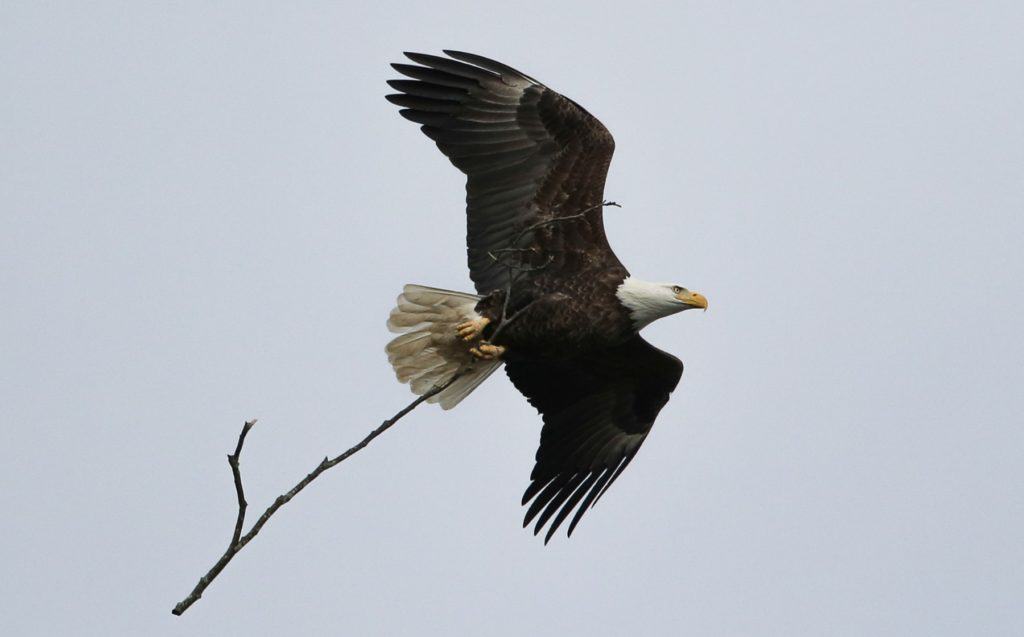Creature Feature

Welcoming New Eagle Families
By Wayne Bierbaum
December and early January is the time when the local American bald eagles are affirming their relationships and you can catch them performing their spectacular “cartwheel courtship flight” mating ritual. I have witnessed it twice; both times I was driving past an open field on the Eastern Shore.
As the ritual started, the two eagles appeared to be fighting, with one chasing the other. But as the chase progressed, they went higher and higher until they were hundreds of feet in the air. Suddenly they faced each other, locked talons and with their wings half open, began a falling spin toward the ground. One spinning pair which I saw near the Eastern Neck WMA, was dangerously close to the ground before they separated. I initially thought they hit.
After that dramatic courtship, the pair fix up a nest with large branches and line it with grass. The nests can weigh in the tons. In January or February, two or three eggs are laid and hatch.
Similar to osprey, the female spends the most time on the nest and the male brings the meals. The eaglets are fed very carefully from the parent’s sharp beak, the loudest and boldest babies usually get fed first. Unfortunately, if three eaglets are born, the third is born a day or more after the others and is the smallest. The two larger ones sometimes will pick on the smaller which frequently does not survive. Even when there are only two eaglets, the larger one will pick on the smaller. When there is plenty of food, all the young have a good chance of survival.
As they age, the eaglets will start tearing the food into bite-sized pieces and the parent can simply drop the whole fish in the nest and start spending less and less time feeding them. The parents then start resting and roosting in trees nearby. When the eaglets are strong enough to fledge, they will follow their parents out of the nest and learn to hunt. The parents initially feed the fledglings but fairly soon the young will have to challenge the adults for food or catch their own.
Eagles have to protect their offspring from the winter elements and get enough food. Their natural aggression helps their survival. I have gone to the Susquehanna Dam at Shuresville to watch the eagles that are feeding on migrating fish get jostled by the dam. The eagles there would rather chase one another for a fish than catch their own and it does seem that the younger birds are the most aggressive.
Eagles are now on their nests with eggs or newly hatched eaglets. Eagle cams from all over the United States are available online. The National Arboretum has a camera on its active eagle nest (https://naeaglecam.org/).
